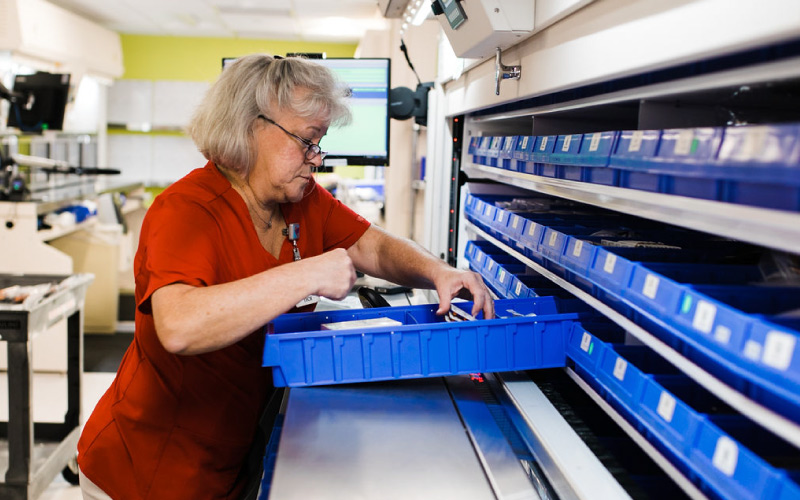Automated Storage System Industries
Aerospace VLMs
Automated storage systems like Vertical Lift Modules (VLMs) and carousels optimize space and increase picking accuracy. They provide real-time inventory tracking and efficient retrieval, essential for managing high-value aerospace components. These systems enhance operational efficiency and streamline workflows, making them ideal for aerospace facilities. 1

Government VLMs
These systems ensure secure, organized storage and real-time inventory tracking, improving efficiency and compliance in government operations. They reduce manual handling and streamline processes, enhancing productivity and accountability across various government applications.

Grocery VLMs
These solutions streamline operations, enhance safety, and improve inventory management, making them perfect for the grocery industry. They optimize space, speed up retrieval processes, and ensure accurate stock levels, supporting efficient and reliable grocery operations.

Healthcare VLMs & Carousels
Automated storage systems provide efficient inventory tracking, quick retrieval, and space optimization, crucial for healthcare facilities. They improve organization, reduce retrieval times, and enhance the management of medical supplies and equipment.

Manufacturing VLMs
VLMs and carousels streamline retrieval, reduce downtime, and enhance safety, boosting productivity in manufacturing. These systems support just-in-time production and improve inventory management, ensuring critical parts and materials are always available.

Medical Device VLMs
Automated systems optimize space, ensure precise organization, and improve inventory control, vital for managing sensitive medical devices. They enhance operational efficiency, ensure compliance with regulatory standards, and provide quick, accurate access to essential components.

Pharmaceuticals Carousels
VLMs and carousels provide accurate inventory tracking, quick retrieval, and improved safety, vital for pharmaceutical storage. They ensure compliance with regulatory standards, optimize space, and enhance the management of high-value pharmaceutical products.

Pharmacy Carousels
VLMs and carousels ensure accurate inventory management, quick access, and reduced labor costs, essential for pharmacies. These systems improve workflow efficiency, ensure the availability of medications, and enhance overall operational effectiveness.

Retail VLMs
Automated systems optimize space, speed up retrieval, and enhance stock management, benefiting retail operations. They support efficient order fulfillment, improve inventory accuracy, and enhance the overall customer experience.

Semiconductor VLMs
These systems ensure precise inventory control, efficient space use, and enhanced safety, ideal for the semiconductor industry. They streamline storage and retrieval processes, reduce handling risks, and support high-precision manufacturing environments.
